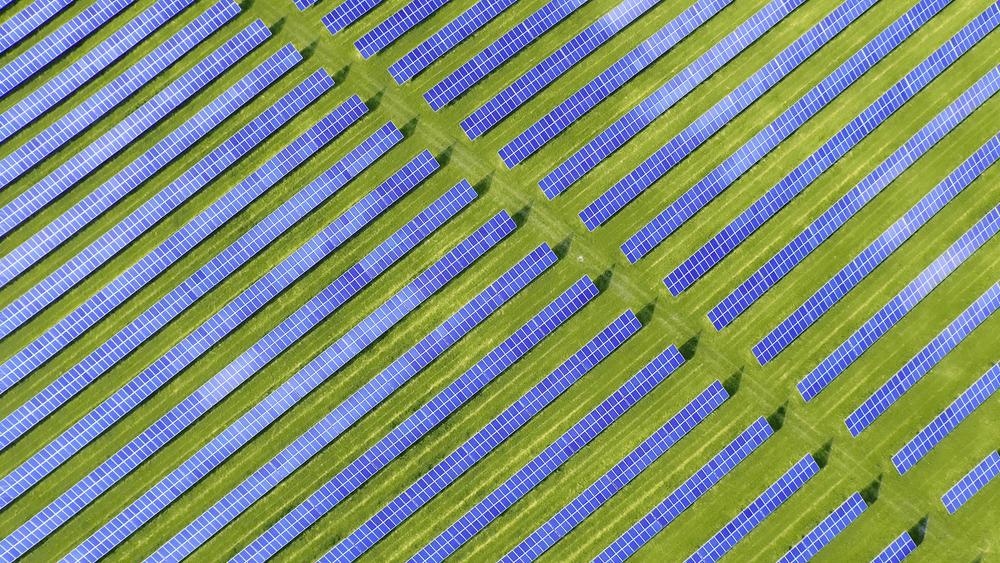In a review paper published in the Advanced Photonics Research journal, the benefits of using nanophotonics in perovskite solar cells to improve overall efficiency and developing tandem solar cells has been discussed.

Study: Nanophotonics for Perovskite Solar Cells. Image Credit: Clever Stock/Shutterstock.com
Advantages of Using Halide Perovskites for Photovoltaic Applications
Halide-based perovskites are highly promising semiconducting substances for various uses requiring emission or absorption of light. Photovoltaic systems are among the most significant of these uses.
Although the overall efficiency of such photovoltaic cells was as low as 3.8 percent to start with, upsides such as reduced production expenses, lack of harmful waste associated with production, and fascinating electrophysical characteristics of halide-based perovskites prompted research into their photovoltaic prospects.
Perovskite Vs. Silicon-Based Photovoltaics
The well-known thin-film photovoltaic cells vying with the recently proposed perovskite solar cells (PSCs) are made of amorphous silicon (a-Si) with a polished electrode on the back side. However, a-Si photovoltaic cells are just not flexible because of the usage of polished metallic electrode, which acts as a reflector for the sunlight passing through amorphous silicon.
The overall efficiency of such photovoltaic cells was estimated to be approximately 10%. Meanwhile, the perovskite solar cells achieved an 18% photovoltaic converting efficiency.
The overall efficiency of thin-film PSCs is 25.5% when combined with flexibility. The need for flexibility reduces the efficiency of photovoltaic cells based on amorphous silicon. The same is not true for halide-based perovskites. They are adaptable because of their clay-like nature, enabling various anions and cations to combine.
Since halide-based perovskites are more flexible, soft, and more forgiving to faults generated following the incorporation of non-perovskite nanomaterials, it proved more challenging to incorporate nanophotonic structures into Si-based photovoltaic modules than perovskite ones.
Development of Tandem Solar Cells Using Halide Perovskites
The use of halide-based perovskites enabled scientists to develop low-cost tandem photovoltaic cells with varied contents of perovskite layers for efficient partitioning of the collected sunlight spectrum.
Separate spectra of solar light are captured by varying photovoltaic sections in tandem SCs. It significantly reduces the relaxation losses of photogenerated carriers.
An excellent electrical contact between perovskite and crystalline Si allowed for a low-cost proposed design for hybridized tandem SCs, including a nanoscale perovskite layer on a Si plate. This kind of perovskite tandem cell avoids traditional PSCs' fundamental disadvantage: their efficiency is smaller than the maximum (Shockley–Queisser) number.
Stability Concerns of PSCs
The stability of perovskite solar cell characteristics is critical, and this has proven to be a tough challenge for halide-based perovskites and appropriate hole-transport substances.
Their stability indicates a long lifespan in the face of ambient changes in humidity, heat, and ultraviolet exposure. Some technological strategies for enhancing the stability of perovskite solar cells without compromising their photovoltaic qualities have been discovered by now.
Albeit the stability of solid perovskites to mentioned outside circumstances still limits the lifespan of PSCs, this stability has increased at the same pace as the total efficiency of PSCs.
Incorporation of Gold and Silver Nanoparticles in Photovoltaics
Previously, matrices of gold and silver nanoparticles leveraging the plasmonic resonance phenomena were employed to enhance solar cells such as a-Si photovoltaic cells, organic photovoltaic cells, and LEDs.
It is not unexpected that these nanoparticles might also be useful in PSCs. All-dielectric nanophotonics have expanded the capabilities of LEDs, photodiodes, and lasers based on perovskites.
Future Prospects of PSCs
Once nanophotonics show their superior ability to enhance PSCs, future improvements can be foreseen in innovative concepts based on low-loss components, low-cost large-scale techniques, sophisticated tandems with nanostructures, and widespread machine learning deployment.
The team believes that multipurpose perovskite-based gadgets enhanced by nanophotonic components will prove to be quite popular in the near future.
For instance, solar cells have lately exhibited numerous additional capabilities, including SCs with embedded hydrogen-based photoelectrochemical generators, light-emitting SCs, transistors, photodetectors, photo batteries, and photonic synapses.
They integrate photo-induced charging, emission of light, storage of energy, and a photo-induced ionic current which are photovoltaic, LED, battery and neuron features, respectively. These devices can operate in harmony with other systems so that some photons work for translucent perovskite gadgets while another portion of the spectrum drives additional features.
Source
Furasova, A., Voroshilov, P. et al. (2022). Nanophotonics for Perovskite Solar Cells. Advanced Photonics Research. Available at: https://onlinelibrary.wiley.com/doi/10.1002/adpr.202100326
Disclaimer: The views expressed here are those of the author expressed in their private capacity and do not necessarily represent the views of AZoM.com Limited T/A AZoNetwork the owner and operator of this website. This disclaimer forms part of the Terms and conditions of use of this website.